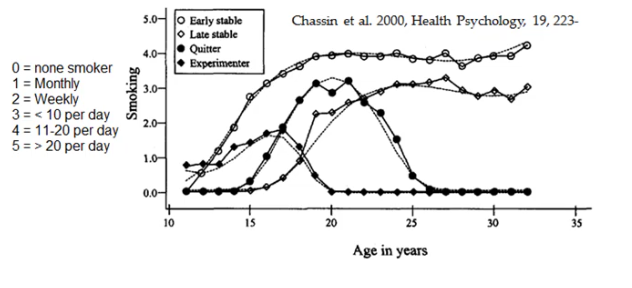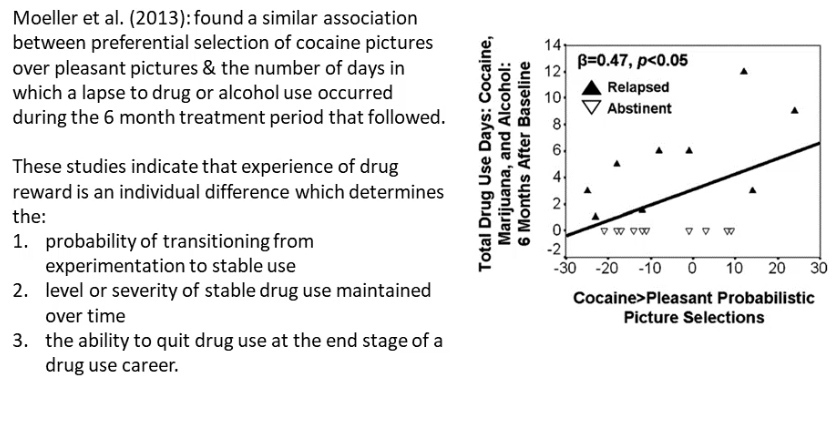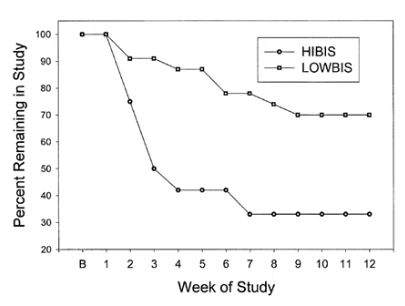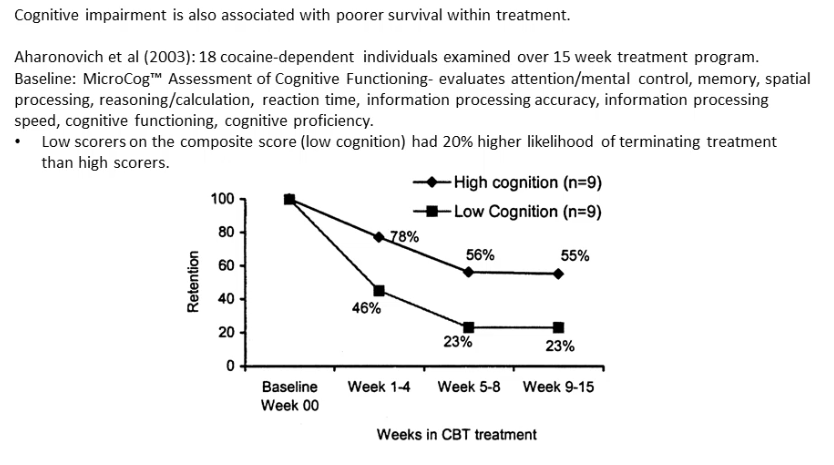Individual Differences in Vulnerability to Dependence
Contents
Pre-existing Dysregulation
Tarter et al (2003 & 2004) examined traits of individuals at risk of substance dependence prior to drug use. They tested children ages 10-12 of high risk and low risk parents.
Higher percentage of people with traits for children of high risk parents.
High risk children started drug use at a lower age.
Christie et al (1988) - confirmed the role of anxiety and depression as a pre-existing risk factor of subtance use disorder.
Median age of onset for anxiety disorder - 15 years old
Median age of onset for depressive episodes - 24 years old
Median age of onset for drug dependence - 19 years old
Median age of onset for alcohol dependence - 21 years old
18-30 year olds with depression or anxiety disorders double the risk for later substance dependence
Ersche et al (2010) used the Barrett impulsivity scale (BIS) (questionnaire to quantify impulsive traits) and found that drug users had higher impulsivity than the control group, and that their impulsive personality may have pre-existed drug use or have been a consequence of drug use. He also ran tests on non-drug using siblings of drug users, and found that they too had higher impulsivity.
- Possibly genetic relatedness, or a shared experience
Age of Onset
Earlier age of onset --> higher risk of becoming dependent
The early age of onset makes an individual more sensitive to the dependence-promoting effects of drugs.
Wong et al (2013) studied the role of the age of onset on dependence formation in rats.
He found that adolescent rats showed greater activity in their dopamine neurons (crucial for drug reinforcement). Adolescent rats self-administered twice the amount of cocaine.
Does not guarantee that an individual will transition to dependence.
But it does promote a higher level / ceiling of stable use
Those who started earlier, took longer to quit (10-15) compared to late started (5-10 years)

Drug Reward
Fergusson et al (2003) found that differences in reward experience determining dependent can be seen during initial drug experience by the user.
Those who reported that they felt highs during initial experience are more likely to become dependent.
Hogarth (2012) tobacco > cocolate. associted with a nicotine dependence
Moeller et al (2009) - cocaine picture choice & dependence

Perkins et al (2002) - smokers preferred the nicotine spray over the placebo spray. After a period of quitting, those who preferred the nicotine spray has a shorter period to relapse.

- Probability from experimentation to stable use
- Level of severity
- Ability to quit
Dysregulation caused/exacerbated by drug use
Inability to quit using drugs at the end phase of a drug use career.
Inability to exert cognitive control, presumably due to damage in brain mechanisms involved in behaviourial regulation
There is evidence that dysregulation is not associated with greater experience of drug reward
Belin et al (2008), overglorified go-go-stop game for rats.
Rats were classified as LI (low impulsive) if they stopped for the first light
Rats were classified as HI (high impulsive) if they stopped for the second light
They were then extensively trained on the self administration of cocaine
A punishment schedule then caused the cocaine lever to induce an electric shock
The LI rats reduced their cocaine administration by 95%.
The HI rats only reduced their cocaine administration by 30%.
The HI rats may have valued cocaine over the pain, or lacked the ability to exert cognitive control.
Impulsivity is not linked to high reward value
Impulsivity is linked to the decoupling of number of puffs consumed in a nicotine test
- For LI smokers, their urge was related to the number of puffs consumed
- For HI smokers, their urge was not related with the number of puffs
Must be an automatic routine, independent of desire (not subject to cognitive control)

Tiffany's Cognitive Theory
Steve Tiffany (1990) compiled studies which reported the correlation between measures of subjective craving (urges) and the actual amount consumed
Correlation is not very strong. Average 0.40, only 25% shared variance.
Drug use is partially governed by desire and partially as an automatic response.
Quitting
Moeller et al (2001) examined people attending a 12 week treatment program.
All subjects attended week 1, but high impulsivity patients were 40% less likely to remain in the program


Mental illnesses in the difficulty to exist
Lasser et al (2000) found that 22.5% of people with no mental illness currently smoked and that 42.% had quit. Those with a mental illness ere more likely to smoke, and showed less ability to quit
Hitsman et al (2013) meta-analysis of smokers with and without major depression, for short term and long term treatment.
MD+ patients has a 17% lower chance of remaining abstinent at < 3 months
MD+ patients had a 19% lower chance of remaining abstinent >= 6 months
Additive Effect
Charney et al (2005) found that those who had depression AND anxiety had a greater risk of relapse than a diagnosis of just one of them.